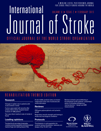Thrombolysis or anticoagulation for cerebral venous thrombosis: rationale and design of the TO-ACT trial
Abstract
Rationale
Endovascular thrombolysis, with or without mechanical clot removal, may be beneficial for a subgroup of patients with cerebral venous sinus thrombosis (CVT) who have a poor prognosis despite treatment with heparin. Published experience with endovascular thrombolysis is promising but only based on case series and not on controlled trials.
Aim
The objective of the Thrombolysis or Anticoagulation for Cerebral Venous Thrombosis (TO-ACT) trial is to determine if endovascular thrombolysis improves the functional outcome of patients with a severe form of CVT.
Design
The TO-A C T trial is a multicenter, prospective, randomized, open-label, blinded endpoint trial. Patients are eligible if they have a radiologically proven CVT, a high probability of poor outcome (defined by presence of one or more of the following risk factors: mental status disorder, coma, intracranial hemorrhagic lesion, or thrombosis of the deep cerebral venous system), and if the responsible physician is uncertain if endovascular thrombolysis or standard anticoagulant treatment is better. One hundred sixty-four patients (82 in each treatment arm) will be included to detect a 50% relative reduction (from 40% to 20%) of poor outcomes.
Study
Patients will be randomized to receive either endovascular thrombolysis or standard therapy (therapeutic doses of heparin). Endovascular thrombolysis is composed of local application of rt-plasminogen activator (PA) or urokinase within the thrombosed sinuses, mechanical thrombosuction, or a combination of both. Patients randomized to endovascular thrombolysis will be treated with heparin before and after the interventional procedure, according to international guidelines.
Outcomes
The primary endpoint is the modified Rankin score (mRS) at 12 months, with a score ≥2 defined as poor outcome. Secondary outcomes are six-months mRS, mortality, and recanalization rate. Major intracranial and extracranial hemorrhagic complications within one-week after the intervention are the principal safety outcomes. Results will be analyzed according to the ‘intention-to-treat’ principle. Blinded assessors not involved in the treatment of the patient will assess endpoints with standardized questionnaires.




